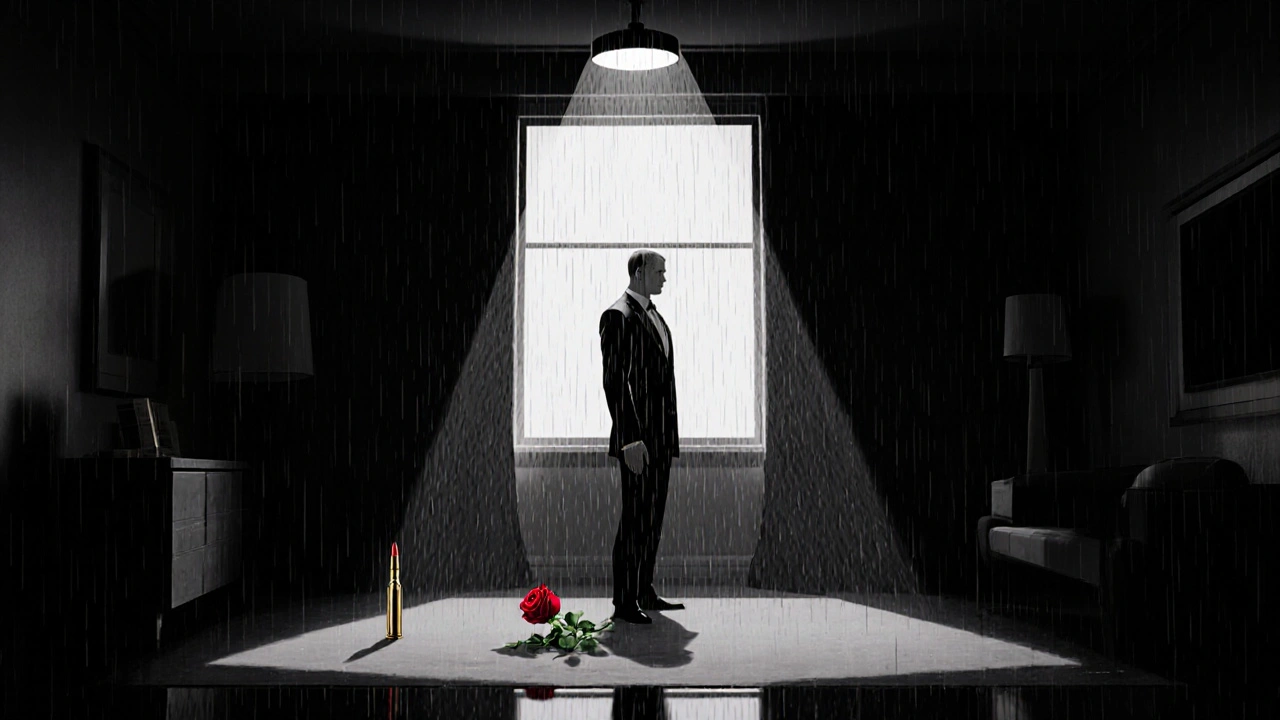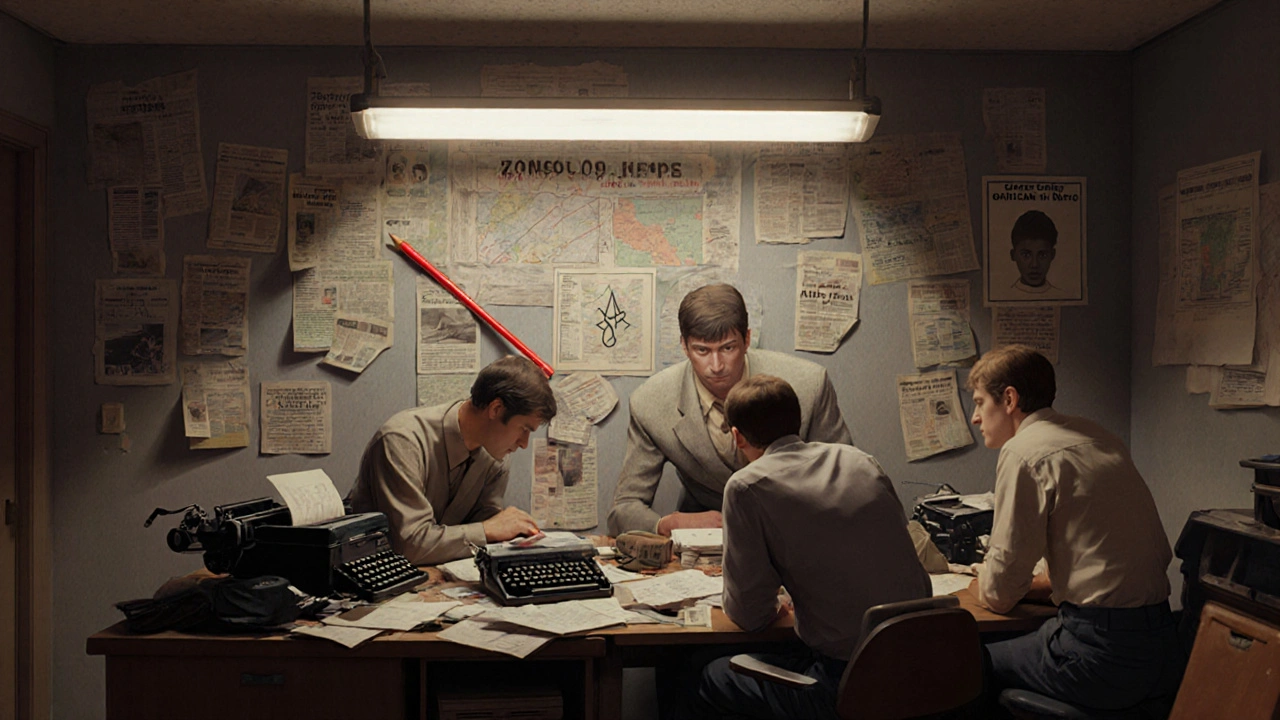David Fincher’s Post-Zodiac Films: A Ranked Guide
If you’ve ever sat through a David Fincher movie and felt your pulse slow down while your mind raced, you know why his work sticks with you. He doesn’t make movies to entertain you. He makes them to unnerve you, to make you question what you just saw, and to wonder why you couldn’t look away. From Zodiac to The Killer, Fincher’s films after 2007 aren’t just thrillers-they’re surgical examinations of obsession, control, and the quiet horror of modern life.
These aren’t the kind of films you watch for a good time. They’re the kind you watch because you need to understand how someone can be so precise, so cold, so utterly relentless-and still make you feel something. Here’s how his seven films since Zodiac stack up, based on critical reception, technical mastery, and the chilling emotional distance that defines his style.
Zodiac (2007): The Masterpiece That Refuses to Solve Itself
Fincher’s Zodiac isn’t a detective story. It’s a time capsule of obsession. The film follows three men-a journalist, a cartoonist, and a detective-each consumed by the hunt for the Zodiac Killer. But the killer never gets caught. The case goes cold. And the men? They unravel.
Shot on 35mm film with Panavision lenses, Zodiac looks like a 1970s newsreel. The color grading is dull, the lighting flat, the sound design muted. There’s no music to pump you up. No dramatic sting when a clue appears. Just the sound of typewriters, police radios, and the quiet hum of a man losing his grip on reality.
It’s the most accurate depiction of real-life investigation ever put on screen. No heroics. No breakthroughs. Just paperwork, dead ends, and the slow erosion of hope. Critics gave it a 90% on Rotten Tomatoes. Audiences? 84%. Why the gap? Because most people want closure. Fincher refuses to give it.
It’s not just his best film. It’s the blueprint for everything that came after. The 50 takes per scene. The obsessive attention to detail. The way he makes you feel like you’re in the room with the evidence. If you’ve ever wondered why Fincher’s films feel so real, start here.
The Social Network (2010): A Digital Tragedy in 120 Minutes
Mark Zuckerberg didn’t invent Facebook. He invented isolation. And Fincher knew it.
The Social Network is the only film about tech that doesn’t feel like a tech movie. Aaron Sorkin’s script moves like a legal thriller, but the real story is about a man who builds a global network-and loses every human connection along the way. Jesse Eisenberg plays Zuckerberg as a genius with no empathy. Andrew Garfield’s Eduardo Saverin? The guy who believed in friendship.
The film’s technical achievements are staggering. The CGI water in the rowing scene? Done with no motion capture. Just pure digital manipulation. The rapid-fire dialogue? Shot in long takes with multiple cameras. The score by Trent Reznor and Atticus Ross? Cold, electronic, and hauntingly beautiful.
It won three Oscars. Critics gave it a 96% on Rotten Tomatoes. Audiences? 97%. That’s rare. Even Fincher’s biggest fans usually don’t love his films as much as critics do. But this one? Everyone felt it. It wasn’t just about Facebook. It was about what happens when you trade connection for control.
Gone Girl (2014): The Perfect Crime of a Perfect Marriage
There’s a moment in Gone Girl where Amy Dunne, played by Rosamund Pike, delivers a monologue about being the ‘cool girl.’ It’s 11 minutes long. Fincher filmed it 87 times. Why? Because every inflection, every pause, every breath had to be perfect. Not for drama. For truth.
This isn’t a mystery. It’s a portrait of how modern relationships rot from the inside. The camera doesn’t judge. It watches. Like a security camera in a quiet house. The colors are muted. The lighting is clinical. Even the music feels like it’s being monitored.
It made $369 million worldwide. Critics gave it an 88%. Audiences? 87%. That’s unusually close for Fincher. Why? Because everyone knows someone like Amy. Or someone like Nick. Or someone who’s been gaslit into silence.
It’s his most accessible film. But don’t mistake accessibility for warmth. This is still a Fincher film. It doesn’t want you to feel sorry for anyone. It wants you to realize how easy it is to become a character in someone else’s story.
The Girl with the Dragon Tattoo (2011): The One That Didn’t Stick
Fincher remade the Swedish hit The Girl with the Dragon Tattoo and made it colder. Darker. More clinical. He replaced the original’s Swedish grit with American precision. The result? A film that looks incredible but feels hollow.
The green tint. The long takes. The brutal violence. It’s all there. But something’s missing. The original film had heart. This one has procedure. Lisbeth Salander is brilliant, but she’s more of a symbol than a person. Mikael Blomkvist? A passive observer.
Critics still gave it an 88%. But audiences? Only 71%. Why? Because the story’s soul was replaced by technique. Fincher loves control. But here, control killed the emotion.
It’s not bad. It’s just unnecessary. The original still stands as the better version. Fincher’s remake feels like a museum exhibit-perfectly preserved, but lifeless.
The Curious Case of Benjamin Button (2008): The Exception to the Rule
Fincher made a romantic drama. And it worked. Sort of.
Benjamin Button is the only Fincher film that tries to make you cry. It’s about a man who ages backward. Brad Pitt plays him with quiet grace. Cate Blanchett is his love. The visual effects? Groundbreaking. The de-aging tech was so advanced, it became industry standard.
But here’s the problem: Fincher doesn’t believe in happy endings. He believes in inevitability. And this film? It fights that instinct. It gives you sentiment. It gives you hope. And that’s why it’s his most divisive film.
Critics gave it a 70%. Audiences? 82%. People loved it because it felt human. But critics hated it because it felt like a Hollywood movie. And that’s the irony. Fincher, the master of detachment, made his most emotional film-and it alienated the very people who admire his coldness.
It’s not his best. But it’s the most revealing. Because it shows what happens when Fincher tries to be something he’s not.
Mank (2020): Black and White, But Not Simple
Fincher’s first Netflix film is a love letter to Hollywood’s golden age-and a scathing indictment of it. Mank tells the story of Herman Mankiewicz, the screenwriter of Citizen Kane, as he writes the script while bedridden and drunk.
Shot in black and white on digital cameras, it looks like a 1940s film. The lighting, the framing, the sound design-it’s all meticulously recreated. But Fincher doesn’t glorify old Hollywood. He shows it as a machine of power, corruption, and lies.
Critics loved it: 83%. Audiences? Only 63%. Why? Because it’s slow. It’s talky. It doesn’t have a villain you can hate. Just a system you can’t escape.
It’s not about Orson Welles. It’s about how genius gets stolen. How credit gets erased. How the system rewards the loud, not the brilliant. Fincher didn’t make a biopic. He made a warning.

The Killer (2023): Cold. Precise. Empty.
Michael Fassbender plays a professional killer. He doesn’t talk much. He doesn’t feel much. He just does his job. And Fincher films it like a science experiment.
The Killer is the most Fincher film of all his Fincher films. Every shot is framed like a painting. Every movement is calculated. Every sound is controlled. The handheld camera work? Deliberate. The silence between gunshots? Longer than you expect. The color palette? Monochrome with a single red accent.
Critics gave it an 85%. Audiences? 61%. The divide is wider than ever. Why? Because there’s no arc. No redemption. No reason. The killer doesn’t have a backstory. He doesn’t have a motive. He just exists to kill.
Some call it genius. Others call it boring. Both are right. It’s a film that doesn’t want you to like it. It wants you to understand it. And that’s the problem. Most people don’t want to understand a killer. They want to feel something.
But Fincher doesn’t care. He’s not making movies for you. He’s making them for himself. And that’s why he’s still one of the last great auteurs.
Why Fincher’s Films Divide Audiences
Here’s the truth: Fincher doesn’t make films for mass appeal. He makes them for the people who sit in silence after the credits roll. The ones who rewind the last five minutes. The ones who look up the real events behind the story.
His films have a 20-30 point gap between critic and audience scores-the widest of any major director today. Critics praise his control. Audiences complain about the coldness.
But here’s what nobody says: that coldness is the point. Fincher isn’t trying to make you feel. He’s trying to make you think. He wants you to notice the lighting. The silence. The way a character blinks too slowly. He wants you to realize how much of life is performed.
His films are like mirrors. They don’t flatter you. They show you what you look like when you’re not pretending.
What’s Next for Fincher?
At 62, Fincher isn’t slowing down. He’s got a Squid Game adaptation in the works. A Chinatown prequel. And a sequel to Once Upon a Time in Hollywood. All on Netflix. All with budgets over $80 million.
Netflix has committed $200 million for four films. That’s unheard of for a director who doesn’t make superheroes or sequels. But Fincher isn’t just a director. He’s a brand. A guarantee of quality. A name that means you’ll walk out of the theater changed-even if you don’t know why.
He’s the last filmmaker who still shoots on film. Who demands 50 takes. Who spends 14 months on color grading. Who doesn’t care if you like it.
And that’s why, even when his films feel empty, they never feel cheap.

